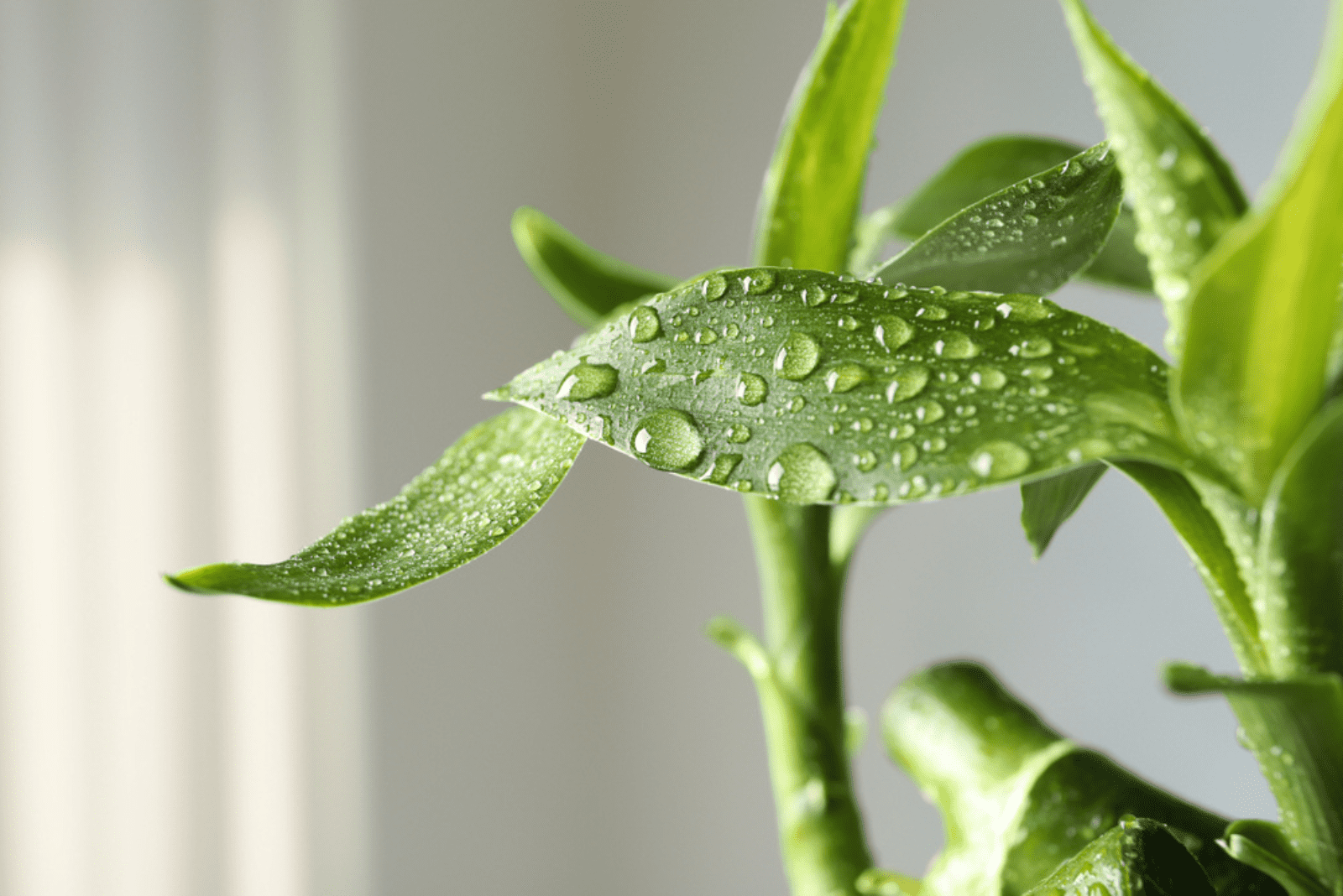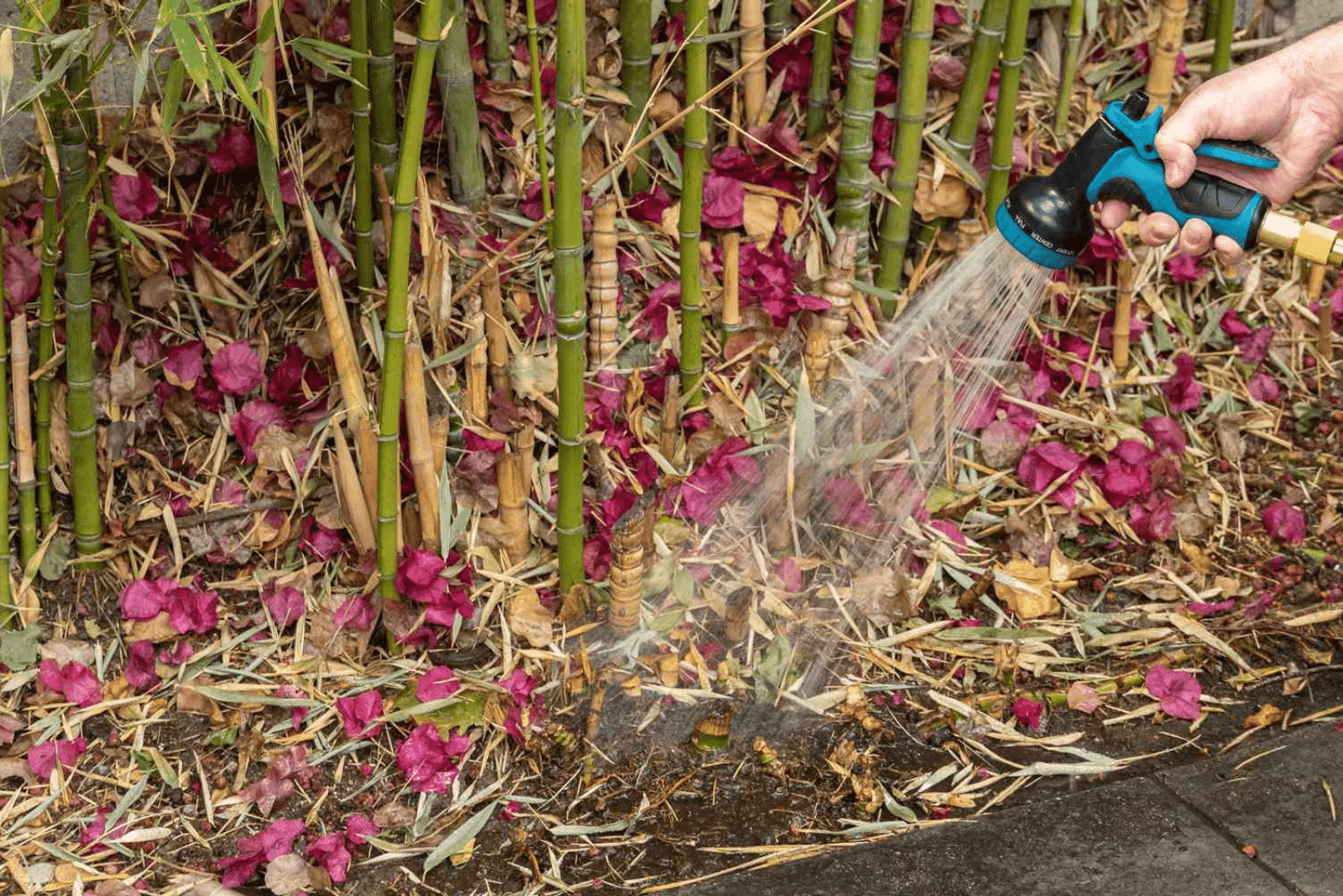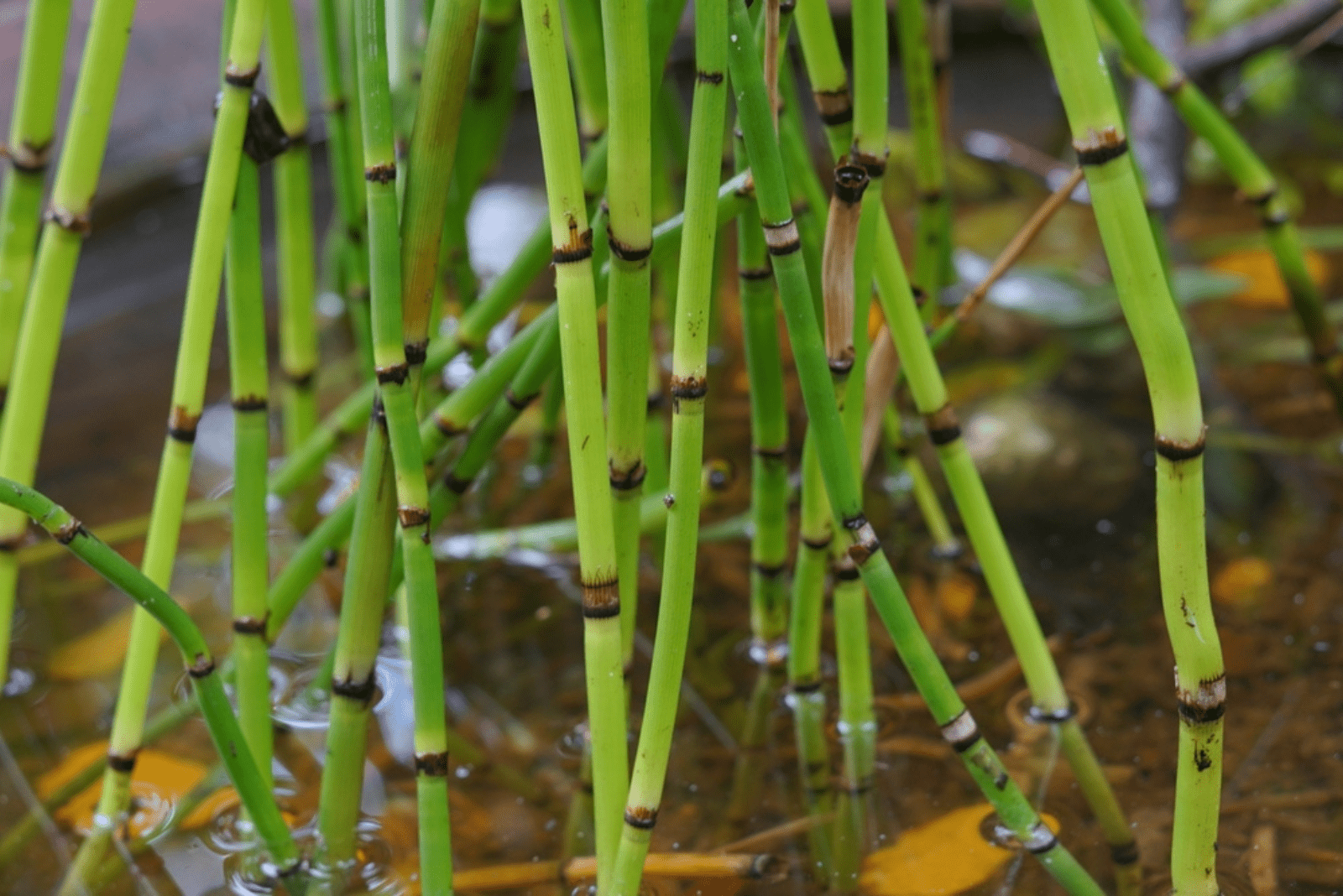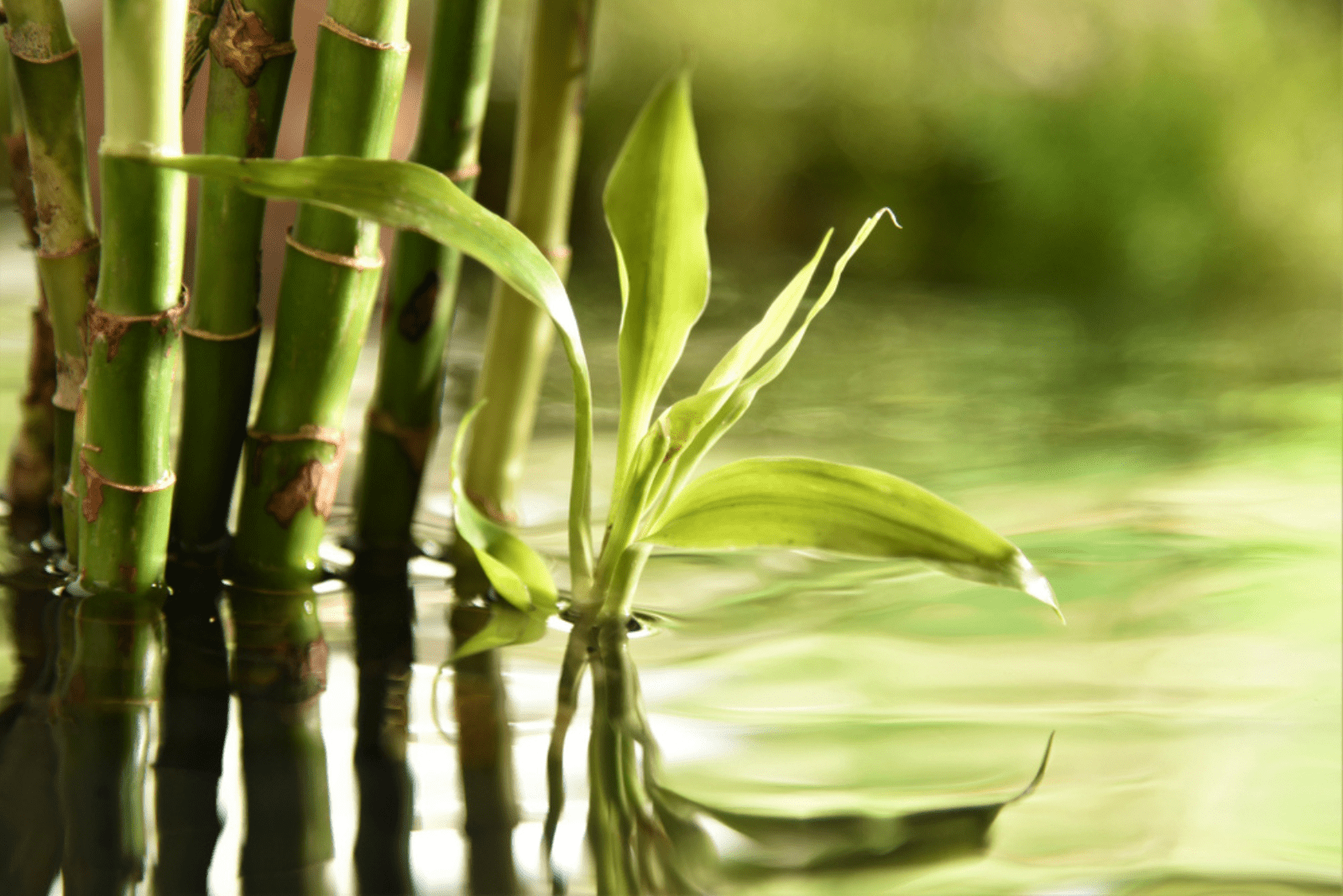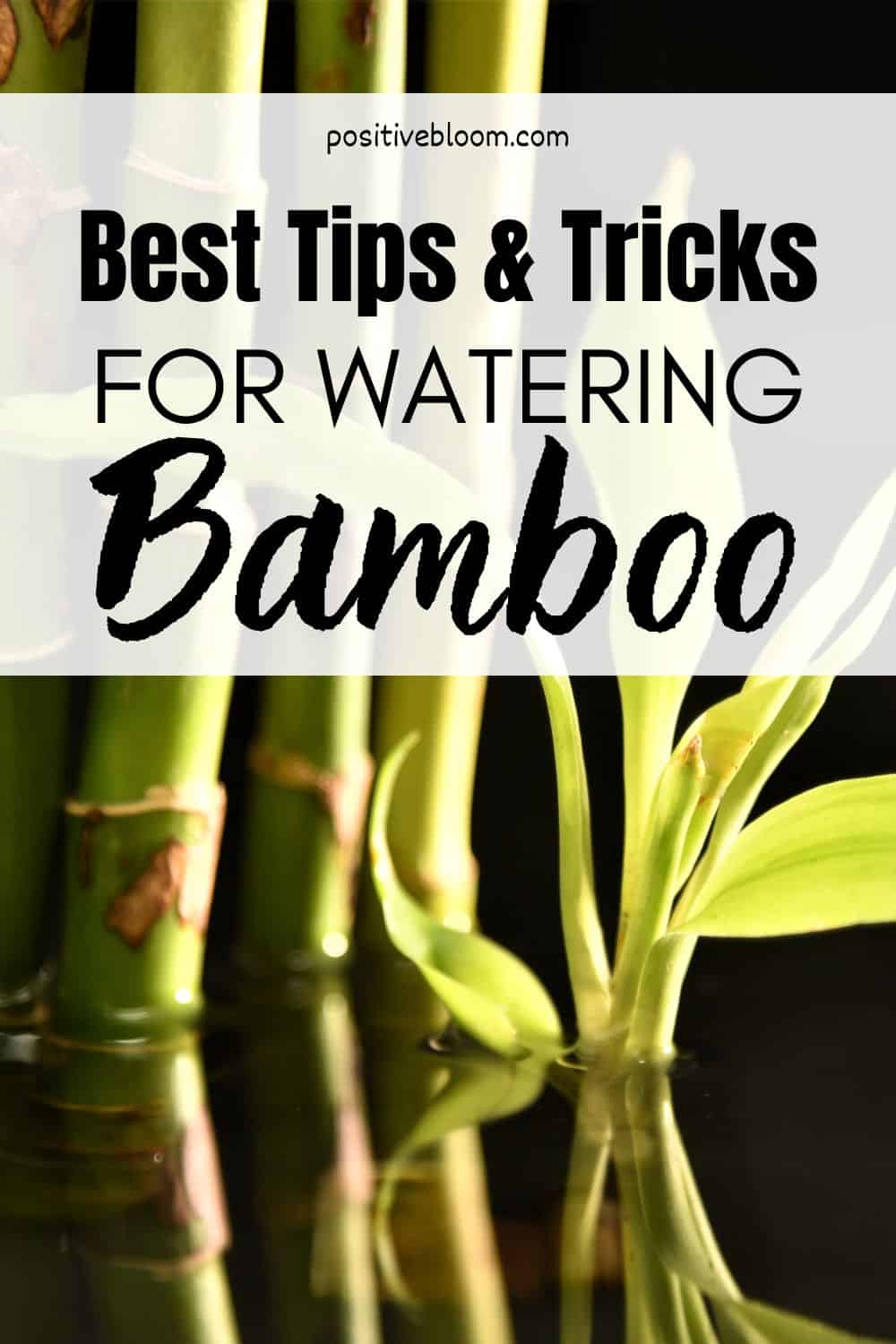Bamboo plants are probably one of the easiest plants to grow. Bamboo, otherwise known as Dracaena sanderiana, is one of the rare plants that can grow in both water and soil. Two common types are Lucky bamboo and Clumping bamboo.
It is believed that Lucky bamboo plants, especially those that are given as gifts, will bring luck and fortune to their owners, which is why they are so popular nowadays. Additionally, these plants are very unique-looking and quite easy to take care of.
However, watering bamboo can sometimes be tricky as they constantly require moist soil, especially if you keep overwatering your plants. You also have to be careful regarding the type of water you use for your bamboo!
To find out all the necessary information about watering bamboo, keep reading!
What You Need To Know About Watering Bamboo
Bamboo plant care is pretty basic — it requires plenty of direct sunlight, well-draining soil, plant food with essential nutrients, and thorough watering. However, it can be rather picky about the watering requirements.
For instance, one of the reasons why your bamboo might be turning yellow is because you’re using an inadequate type of water. Therefore, there are a few things that you should keep in mind when cultivating bamboo plants.
What Type Of Water To Use
Lucky bamboo is one of the many plants that are fussy about the type of water they receive. Tap water, which contains contaminants that have not been filtered, exposes it to risk. These chemicals include chlorine and fluoride.
Using tap water has impacts that take time to become noticeable. It is the end effect of harmful compounds gradually building up over time. These toxic substances will stop essential plant processes like respiration and photosynthesis.
Your lucky plant will begin to wilt, yellow, droop, or even turn brown.
Therefore, you should stop using tap water to avoid fluoride and chlorine buildup.
You can use rainwater, distilled water, or filtered water instead of tap water.
The best thing you can do for your plants is use rainwater. You can protect your lucky bamboo from dangerous chemicals by collecting and using rainwater.
Read also: What Is The Best Water For Plants? Find Out The Answer Here!
How Much Water To Use
Let’s start off by saying that your bamboo needs plenty of water. It requires thorough and deep watering — it should be soaked to a depth of at least 8 to 12 inches. If the first 4 inches of soil are dry, then the water hasn’t even reached the bamboo roots.
Thorough watering is especially important after transplanting. It would be best if you didn’t wait until the soil is bone dry to water them again; instead, water them when the soil is moist. Once the plant has established and the bamboo is producing rhizomes and new shoots, it becomes drought-tolerant and can go for a good period of time without watering.
How much water to use is also affected by the climate — you shouldn’t water them just after rain. In windy, full sun, and dry climates, you should mist the bamboo leaves once a day, and you can also keep the soil moist by misting it every other day.
Don’t use too much water because it might lead to withering canes and root rot!
How Often To Water Bamboos
Young bamboos and newly planted bamboos need much more water than established plants. We usually water these plants once a week, but new plants that have been propagated require 2-3 waterings per week. You should be extremely careful during the first year of growing new bamboo.
The water needs may differ as the seasons change. For instance, during the hot summer, your Bamboo houseplant might need more watering. During the cold winter, you should ease up on watering as the soil takes more time to dry out.
If you live in a region with a warm and dry climate, you can mist the plants all year round.
Ultimately, you should keep the soil moist. Don’t let the soil stay dry for a long period of time as it might lead to underwatering. Underwatering usually results in yellow leaves and brown leaf tips.
Ensure Proper Drainage
These plants originate from deep rainforests, so when they are grown as indoor plants you should try to do everything in your power to mimic their natural environment. This is why you should always make sure that your potted bamboo has the right soil type, which would be well-draining and rich in nutrients.
Drainage holes in the bottom of the pot are crucial for proper drainage.
Adding mulch around the base of the bamboo plant might help with water retention and also protect the plant from low temperatures in cold climates.
If your plant gets root bound (that is, if its rootball has taken up all the empty space in the pot), it will be more susceptible to water issues. This also impacts the growth rate greatly — your running bamboo might stop growing altogether!
In this case, it is time for repotting. Prepare a pot that is two inches larger than the current one, and use fresh soil suitable for growing bamboo. After transplanting, make sure that the repotted plant gets plenty of water. Don’t keep it in full sun for too long because too much direct sunlight might harm the plant.
You should be aware that a plant that is severely root bound will require more than just a transplant. The root ball has to be split up, possibly with a strong hand saw. Additionally, you should remove the sides and bottom of the root mass, where the rhizomes are reversing course. Keep the rootball moist while performing this, and don’t get upset if a few culms die during the transfer.
Keeping Bamboo In Water
As we mentioned, this lucky bamboo plant can grow in water. However, there is a certain procedure when it comes to watering.
Long periods without changing the water will promote the development of unpleasant organisms. This includes bacteria, fungus, and mold, which may spread diseases or harm the plant.
A perfect environment for the growth of algae is one with stagnant water and excessive light. Algae will start stealing the nutrients your lucky bamboo requires if they get inside the container. This results in deformed and discolored leaves.
Refreshing the water in the container at least once a month is the easiest technique to prevent these issues.
In fresh, clean water, harmful bacteria are less likely to thrive. Additionally, wash the vase and pebbles with mild soap and water before rinsing.
Choose vases made of darker ceramics when buying them for your lucky bamboo. These vases will restrict the light that algae need to develop, which will prevent the growth of algae. You should keep transparent containers away from too much light.
Here are a few quick fixes for problems with algae:
• Remove the Dracaena sanderiana from its vase.
• Wash the pebbles and vase by pouring salt on them, then rinse. Soak the roots in fresh, clean water.
• Put your lucky bamboo back in the vase, then fill it with pebbles and water.
Frequently Asked Questions
1. Can you give bamboo too much water?
Yes, you can give your bamboo too much water if you keep it in soil. The soil will get water-logged, and it will attract all sorts of pests and fungi that are ready to destroy your bamboo plant.
2. How do I know if my bamboo is overwatered?
The first sign of overwatering issues is yellowing of the leaves. Then, the canes will start to wilt, the soil will become smelly, and leaf tips will turn brown. When you touch the soil, it will feel wet rather than somewhat dry or moist.
3. What is the best time of day to water bamboo?
It would be best if you watered your bamboo in the morning so they have enough moisture for the rest of the day, especially during summer.
To Sum Up
Watering bamboo plants can sometimes be tricky, but it is not something that you can’t overcome!
Once you figure out your bamboo needs and find the ideal watering schedule, it will be easy peasy. Don’t forget to add some plant food, as these plants require nutrients for growth and development.
If you want to get lucky, consider buying the lucky bamboo plant, which is one of the best money plants that attract good fortune and prosperity (they also look super cool!).
I hope this article was helpful.
Until next time!
Like this post? Share or pin it for later!

